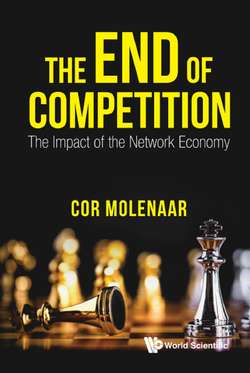Читать книгу End Of Competition, The: The Impact Of The Network Economy - C N A Molenaar - Страница 15
Are the Old (Physical) Structures too Oppressive?
ОглавлениеAnother problem with change is the traditional structure. Companies continue to rely upon fixed structures, structures that arose within stable markets. Many continue to hold on to the traditional decisions of the supply chain and the decision that every supplier and company has to be an independent entity. This leads to control and less dependence, more certainty therefore. Suppliers (the independent entities) compete with one another for the best proposition for the customer, consumer or business. They often still use the traditional marketing instruments: Product, Place, Promotion and Price, with competition mainly being based on price, while that says nothing about the usability, quality or value within a production process. On the Internet, price is transparent, making price comparisons easy. But do people actually buy just on the basis of price? There is the perception that a low price is always beneficial for the buyer! In the old model, pricing has always been a dominant competitive weapon. In the 1980s, Michael Porter based his competitive strategies on the traditional market structure and the mutual competition between suppliers.
Old competition models were based on the following traditional structures:
• greater competitive strength through more efficient processes (the value chain);
• greater competitive strength through a focus on other suppliers in the market;
• by protecting the market as much as possible.
However, in the last decade there has been a growing realisation that there is an actual value proposition and that a sale involves an exchange of values of which price is only one component.
Control is important within the old structures. Among independent entities, control is often linked to possession and/or ownership. A company has its own premises, factories, machines, fleet of vehicles, staff with permanent contracts and a management board that does not change often. Supervisory boards are often old decision-makers with years of experience with the old structure. The capital of such a company can be personal capital (such as with a PLC), and also borrowed capital (loans) or the property of an investor who has more of a short-term vision (private equity). Interest is paid on this and investors tend to be more focused on the profits (efficiency). This short-term approach is a typical Anglo-Saxon approach to business. Porter’s value chain (1985) shows the total value of the value chain and consists of the organisation’s primary and secondary value activities as well as a margin.
Primary value activities are directly related to the physical creation, sale, supply and servicing of a company’s product or service. The competition is based on the old instruments of price, product, place and promotion.
• Inbound logistics: This refers to all activities related to the receipt, storage and distribution of purchased materials and/or services that are used in the production process of the company. The supplier partnerships play an important part in the creation of value.
• Operations: This denotes to all activities that have to do with converting this input into the final product for the customer and include processing, packaging and assembly.
• Outbound logistics: These activities relate to the supply of a product and/or service to the customer and include aspects such as an organisation’s collection, storage and distribution systems.
• Marketing: This includes all activities that stimulate the buyer to enter into a transaction, which include advertising, promotion and price.
• Sales: This indicates all activities that ensure that the buyers are able to purchase the product, which include channel selection and the customer relations with these channels.
• Service: This represents all activities that are concerned with delivering service in order to increase or maintain the value of the product and/service. Examples include installation, repair, advice and delivery of parts.
The following secondary activities support the above-mentioned primary functions:
• Procurement: This refers to the function of purchasing materials and/or services that are used in the production process of the company. This therefore does not refer to the purchased inputs themselves. This includes finding suppliers and negotiating the best price.
• Human resource management: This refers to all the activities that relate to recruiting, hiring, training, developing, motivating, remunerating and retaining the staff necessary to carry out the value activities.
• Technological development: This indicates all the activities related to managing and processing information as well as protecting the knowledge base of a company.
• Firm infrastructure: This consists of the functions that allow a company to carry out its daily activities such as accounting, legal matters, administration and general management.
The margin is the difference between the total value and the costs for carrying out the value activities in a linear sequence of the value chain.
